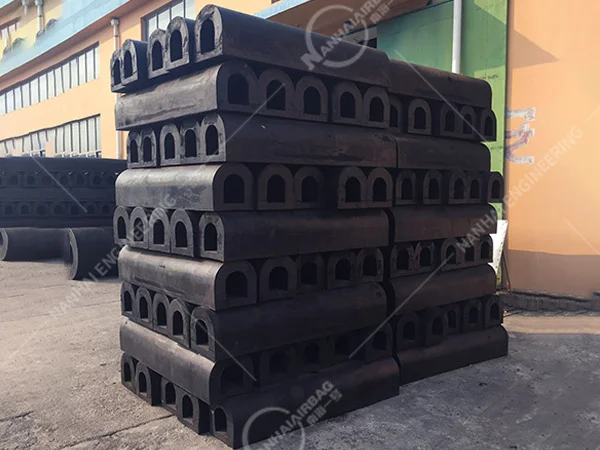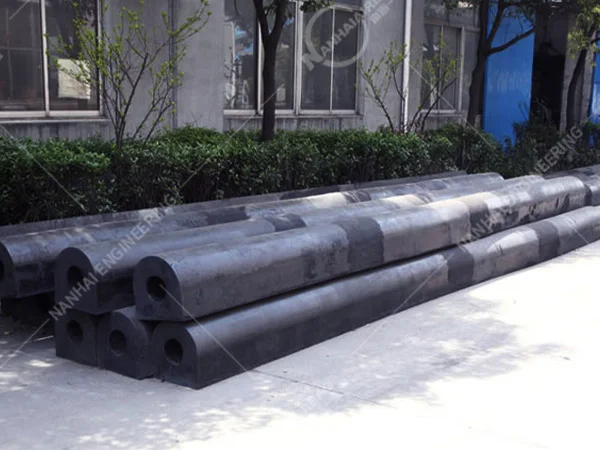Floating Fenders: The Smart Solution for Modern Maritime Safety
29/05/2025Why Yokohama Floating Fenders Are the Gold Standard for Marine Protection
05/06/2025

If you’ve ever watched a boat slam against a dock during choppy waters or worried about scratches from rocky shorelines, you’re not alone. A D-fender (or D-shaped marine fender) is the unsung hero of boating safety, designed to absorb impacts and protect both your vessel and docks from costly damage. Let’s dive into why these rubber guardians are essential—and how to choose the right one.
🚤 What Makes D-Fenders a Must-Have?
1. Unique Design for Superior Impact Absorption
D-fenders get their name from their distinct D-shaped profile, which allows them to cradle boats snugly while dispersing energy. Made from high-density marine rubber fenders, they’re flexible yet durable, reducing shock by up to 80% compared to rigid fenders. Unlike flat fenders, their curved shape prevents “water hammer” effect, making them ideal for marinas, docks, and even yachts.
2. Customizable Sizes for Every Vessel
From small runabouts to massive cargo ships, D-fenders come in various diameters (6–36 inches) and thicknesses. For example, a 12-inch D-fender handles sailboats, while 24-inch models protect tugboats. Their versatility makes them a top pick for ship fenders in bustling harbors.
3. Weatherproof & Long-Lasting
Exposed to saltwater, UV rays, and freezing temps? Marine-grade rubber resists cracking, fading, and degradation. Unlike plastic alternatives, these fenders won’t become brittle over time—saving you replacement costs.
⏳ Why Act Now? The Hidden Costs of Skipping Protection
Imagine this: Your wooden dock splinters after a storm because a boat rubs against it. Repairs could cost thousands. Or worse—a guest gets injured from a loose dock plank. D-fenders prevent these scenarios. In busy marinas, 60% of docking damage occurs due to inadequate protection. One storm season without fenders could mean a flooded bilge or a totaled boat. Don’t wait until an accident happens!
🌟 How to Choose the Right D-Fender (Ship Fenders Made Easy)
Not all D-fenders are created equal. Here’s what to prioritize:
- Density: Opt for 65-75 Shore A hardness for balance between cushioning and durability.
- Mounting: Choose between fixed brackets (permanent docks) or removable straps (rental boats).
- Certifications: Look for ISO 17338 standards to ensure industry-tested performance.
Pro Tip: Pair D-fenders with fender boards for extra protection on sharp corners.
🔧 Installation Tips to Maximize Effectiveness
- Angle Placement: Install D-fenders at 15–30 degrees to deflect impacts.
- Cover All Contact Points: Use multiple fenders along the hull’s length.
- Regular Inspections: Check for wear, especially after harsh weather.
❓ People Also Ask (FAQs):
Q: Are D-fenders better than spherical fenders?
A: It depends! D-fenders excel in tight spaces, while spherical fenders handle heavy-duty impacts. For most recreational boats, D-fenders are ideal.
Q: Can I use marine rubber fenders on yachts?
A: Absolutely! Premium rubber blends are perfect for luxury vessels, offering quiet protection without noise pollution.
Q: How often should I replace D-fenders?
A: Every 5–7 years, or sooner if cracked/chipped. Saltwater accelerates wear, so inspect yearly.
🛠️ Final Thoughts: Protect Your Investment Today
A D-fender isn’t just rubber—it’s peace of mind. Whether you’re docking at a crowded marina or braving open waters, the right marine fenders save you money, time, and headaches. Ready to upgrade? Browse our guide to top-rated D-fenders for every budget!
Need more help? Ask us in the comments below!
